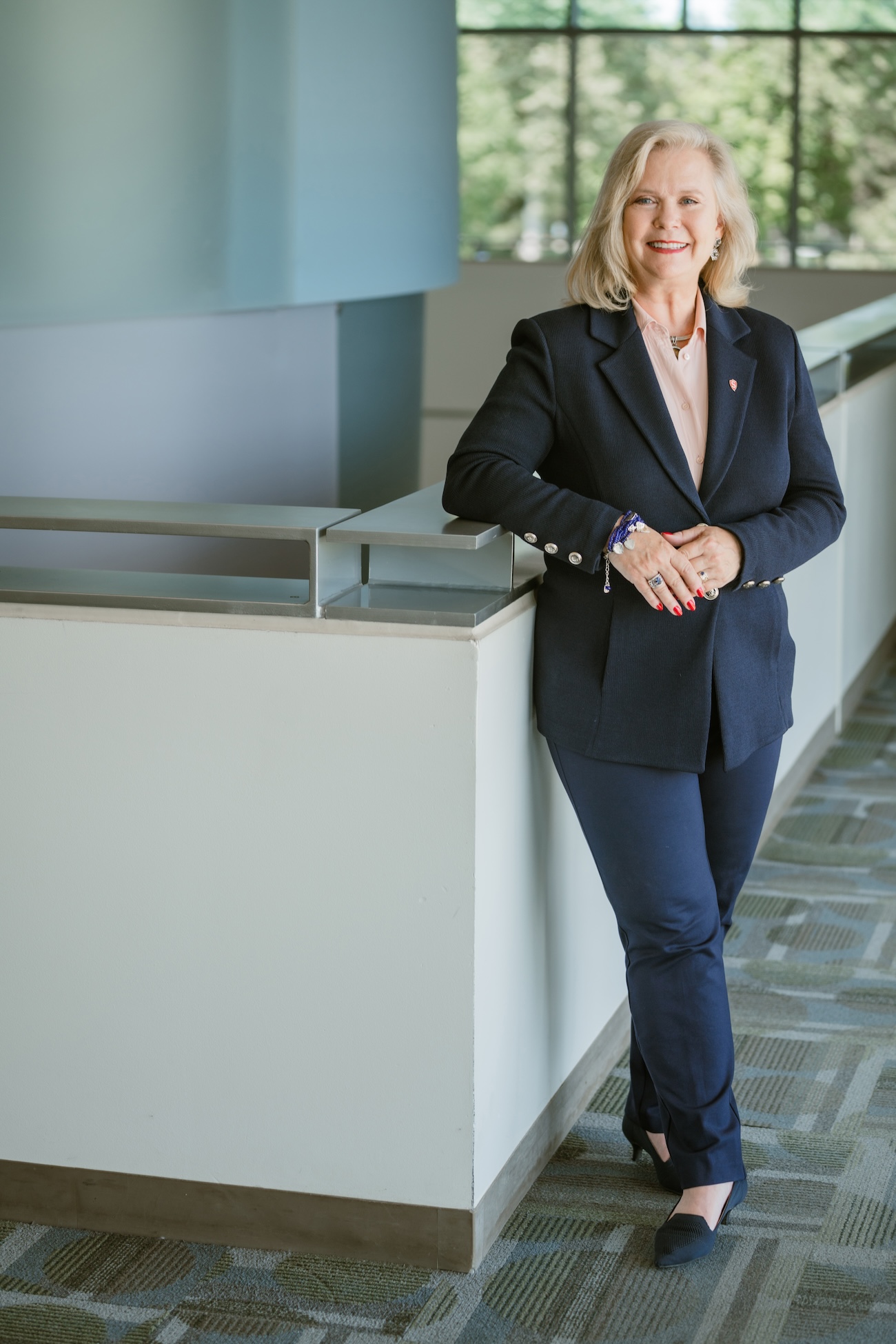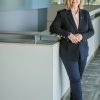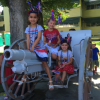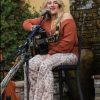Interview
Britt Rios-Ellis, Ph.D.
By Chris Murphy
California State University, Stanislaus is a gem in the California State University system. I earned my bachelor’s degree in computer information systems back in 1984, where we actually helped build the first computer lab as we transitioned from stacks of cards to databases. So much has changed. My father-in-law Mike got his degree in the early ’70s and it changed his life. My parents also earned master’s degrees, so Stanislaus State has been an important part of my life. I was able to earn a great degree while I raced bicycles and worked, and that systems education has served me well. I think Stanislaus State has been a wonderful solution and provided opportunities for so many of us here in our region.
Stanislaus State has grown and emerged as one of the top-ranked public universities in California and the nation for providing a high-quality and affordable education. While a lot has changed since it was known as Turkey Tech, there is still a welcoming familiarity walking around the campus. It’s easy to navigate and facilitates focus on education.
Recently, Stan State welcomed its 13th president. Over the years, each president has had a different character and vision for the campus, and I think the bright energy of Dr. Britt Rios-Ellis will usher in some new educational and campus innovation.
I first met Drs. Rios-Ellis at Modesto’s Independence Day Parade and again the following week at MoBand in the park. Her vibrance and her energy are contagious. Her husband, Dr. Enrique Rios-Ellis, is a musician and music educator and was in a band when they met. He has a Master of Music with Honors in Woodwind Performance from the University of Oregon, and a Doctorate of Musical Arts in Performance from USC. He plays multiple instruments, has performed in orchestras in Oregon and California and taught courses in Latin American music, music theory and performance and arranging. At Oakland University in Rochester, Michigan he directed the Jazz Program and Jazz and Latin Jazz Ensembles. Given our mutual passion for music, it’s no surprise we all hit it off.
Leading a university can be tough with so many responsibilities, from expanding the student body and targeting new courses of study to building, nurturing and maintaining great relationships across the campus and in the surrounding communities. Dr. Rios-Ellis has been a champion of inclusive excellence, equity and student success. She received her undergraduate degrees in Spanish and political science and earned her master’s of science in kinesiology and her doctorate in Community Health from the University of Oregon. Her academic leadership began at Cal State Long Beach working in health sciences and as the founding director of the Center for Latino Community Health, Evaluation and Leadership Training, and then was a founding dean of the College of Health Sciences and Human Services at Cal State Monterey Bay. In 2021, she joined Oakland University in Michigan as its provost and executive vice president for Academic Affairs and served in the position before returning to California to lead Stanislaus State.
ModestoView: In the short time that you have been here in the Modesto area, what are your impressions?
Britt Rios-Ellis: I have just fallen in love with the Central Valley, and at the heart of the Central Valley and the Modesto region are the people. Everywhere Enrique and I have gone, folks have been so warm and inviting. I’ve felt an overwhelming sense of welcome.
MV: Your background is so diverse, how did you choose your undergrad degrees?
BR-E: I first started my career wanting to be a politician. I wanted to engage in politics. After I completed my first two degrees, I realized that I also wanted to be in science and earned a Master of Science in Health and Fitness Management. I realized that a lot of what was at the essence of well-being was community health. So, I did my doctorate in community health. I also have a certificate in women’s studies, which is now referred to as gender studies. I’ve done a lot of training programs, at Harvard, at Bryn Mawr through HERS and completed multiple training programs through the American Association of State Colleges and Universities.
You had the opportunity to study in Mexico, how did that affect your educational path?
I went to study in Guadalajara, Mexico, in 1982, and unbeknownst to me, I was able to work with the great civil rights leader José Angel Gutiérrez and live with a family that I am still extremely close to today. During that time, I saw the struggles of diverse groups of folks living in Mexico who were gravely misunderstood, and I saw an opportunity to facilitate their health and well-being.
I was presented with various opportunities to contribute to different research studies, which allowed me to better understand and work through the community-based participatory research process. This experience helped me become an expert in facilitating and leading the development of applied research and service projects in higher education and community health throughout the nation, with a primary focus in California, as well as Mexico and Puerto Rico. I was blessed to have the opportunity to work with UnidosUS and founded the Center for Latino Community Health, Evaluation Leadership Training at Cal State Long Beach as well as a barrio-based center called Centro Salud Es Cultura.
These centers potentiated a variety of efforts that set the mark in terms of what it means to be a Hispanic-Serving Institution, what it means to be community engaged and what it means to ensure that a university not only resonates with its students and its faculty and staff, but also to its surrounding communities.
MV: How did you meet Enrique?
BR-E: I was finishing my master’s, and he was finishing his bachelor’s at the University of Oregon, and his younger sister was my best friend. He had the best Latin jazz band in the Pacific Northwest, and I always found myself out with his sister and his family listening to great music. When he would come visit his parents I was often at their apartment and really became part of the family. So, we knew each other a long time before we dated. I got to know him, and it was actually in French Camp where I fell head over heels in love. He was part of a migrant theater group called Teatro Nuestro, and they were providing education and human rights work through theater. We went on our first date in June 1990 and celebrated our 28th wedding anniversary last month.
MV: What were some of your early challenges as you began teaching in the CSU System?
BR-E: The CSU faces budgetary challenges, but it’s what the CSU accomplishes despite these challenges that has fueled my commitment. I turned down a position at Johns Hopkins University and pulled out as finalist in a tenure-track search at the University of Maryland to come to Cal State Long Beach in 1994. The mission of the CSU —educating America’s new majority — provides us with incredible opportunities to create and model culturally, linguistically and community-resonant educational approaches and programs. The CSU is at the heart of my mission, and I am so grateful to be back working at what I know is the most impactful educational system in the United States, if not the world.
MV: There is so much academic inequality in our systems, how did you work to start solving some of those issues?
BR-E: I approach this challenge with a profound equity lens, and both Enrique and I share this perspective. I recognize that it’s easier to foster success in highly funded school systems where engagement, involvement and resources, such as having access to AP courses, are standard. In those environments, the expectations for students are higher, and they almost always rise to meet them. But when students haven’t had access to resources available in wealthier communities, the inequity becomes glaringly apparent. It’s as if they’re starting a race with unequal marks. For me, equity is about re-engineering and redesigning the starting place for all students to ensure they have the necessary support and resources the moment they step onto our campus, so they, too, can rise to meet high expectations. We know they have the aptitude to do so.
MV: How did you become a Founding Dean at Cal State Monterey Bay?
BR-E: One of the things you’ll see in my past is that I am a builder. I’ve been so blessed to have always had folks around me who help build strong teams. I founded the Center for Latino Community Health, and we secured a $50 million grant for Cal State Long Beach. I also wrote the grant that helped make Cal State Long Beach a Hispanic-Serving Institution (HSI) and developed our best practices through an HSI STEM grant, which integrated humanities and the arts in STEM training to effectuate cultural resonance. This SHTEAM approach is extremely effective in potentiating student success and we have the chance at Stan State to integrate disciplines and expose our students to a myriad of high impact practices that transform both students and their families for generations to come.
Establishing programs is inherent to what I do and how I like to work, and I’m the type of leader who embraces new challenges. When I saw the opportunity to become the founding dean for the College of Health Sciences and Human Services, it resonated with me. It was a chance to build something from the ground up, so I took that chance, and it led me to where I am today.
What do you see as a big opportunity for Stanislaus State?
I see a tremendous opportunity for Stanislaus State to shine through public-private partnerships. We can create the partnerships needed to ensure that our region is replete with professionals trained in the disciplines essential for our community to thrive. It’s very clear that our region is growing and remains one of the few affordable areas in California. There are significant needs in healthcare, education and science-based agriculture that Stan State is well-positioned to meet. Our Stockton Campus plays a crucial role in this vision. Located in a hub for health and human services providers, Stockton offers us a unique opportunity to train and supply the professional workforce partner organizations need. One thing is certain: when Stanislaus State thrives, the Central Valley thrives.
MV: Stanislaus State has a great reputation and being a welcoming place for students who are first in their family to attend college. How do you view the importance of this?
BR-E: Ensuring we are meeting our mission of educating America’s new majority means that educating first-generation students is central to our mission. Being a space where first-generation educated students can feel welcome and experience a strong sense of belonging is absolutely vital. For this reason, we are creating engaging, welcoming and informational videos in both English and Spanish. We’re making sure these videos aren’t directed only to students but to their families and the community as well. We want everyone to be involved in the great work that Stan State is doing. We also want to hear people’s aspirations and desires regarding what our campus should do and what we should aspire to become.
MV: If you had an unlimited budget, what is something you would add at the university?
BR-E: I would prioritize the need for interprofessional training in health and human services. The pandemic clearly demonstrated this need. I envision us training professionals in these fields, as well as in education, in a much more collaborative way. I would also establish community-facing clinics where we could provide direct services to the public. Creating an interprofessional health, human services and education hub would allow us to train even more cutting-edge professionals who can meet the needs of the Central Valley and beyond. Additionally, by integrating the arts and humanities, we would reach a breadth of folks and showcase the full range of educational opportunities Stan State provides. I would also create short term study abroad opportunities to ensure that our students could potentiate their understanding of what it takes to be global citizens on our rapidly shrinking planet.
How important do you think music education in schools is for developing students?
Music education is a vital part of an arts and humanities education that should be integral to every student’s experience. All students should have the opportunity to learn an instrument, but with the funding disparities we see in education today, that opportunity sometimes gets lost. It’s crucial for people to understand that good music skills lead to good math skills, good reading skills, instructional skills, and so much more. Think about how a song can instantly transport you to another country, another culture, or a special moment in your life. Our ability to fully embrace and transmit the cultural capital of students makes it imperative that we recognize music as a powerful form of critical expression, especially during the complex times our students are facing today.
How have your kids benefitted from having parents in the arts and education?
I often joke that I’m the most boring person in my family. My oldest daughter was a theater arts major, my son majored in film and writing and my youngest daughter is an illustration and arts major. And, of course, there’s Enrique with his doctorate in musical arts from USC—he’s an amazing musician and educator. My life would be a fraction of what it is today without these incredible artists around me. I believe my children think more broadly, feel more deeply and have a more complex, innate understanding of how the arts and expression can be woven into every aspect of life. A powerful example of this is my youngest daughter, Itzel. After we lost our home in the Carmel Fire, she integrated that experience into her senior thesis art showcase. She created sculptures using artifacts from the fire, depicted the fire through her illustrations, and even completed a book about her experience. Artistic expression truly became a form of therapy for her and for our entire family, helping us navigate and process that incredibly difficult time. Seeing the progression of her efforts and her ability to express herself through art was incredibly healing for all of us.
MV: What advice would you give to students ready to make the jump to college?
BR-E: I would share with them one of the best pieces of advice my mom gave me when I started college. She told me, ‘No question is a stupid question, so make sure whatever you want to ask, you ask.’ I echo that advice because it’s important for students to learn to use their voices in the classroom or any learning space. They should feel free to interject, ask questions and find their voices. The classroom is one of the safest spaces they’ll ever have to do that, and it’s through their engagement that they’ll truly maximize their time in college. College is such a rich time of development; transformation is the goal. Take advantage of that—be as involved as you can. Say yes far more than you say no to all things college-related and immerse yourself.
MV: What can our community do to help your mission at Stanislaus State?
BR-E: I’ve been open about the fact that Stanislaus State is currently the lowest philanthropically funded university in the entire 23-campus CSU system. We are incredibly grateful to those who have already contributed to our mission—their support has made a tremendous impact. But to continue transforming our campus and providing students with the best possible educational experience, we need ongoing help. Whether it’s a $5 or $10 monthly gift or a larger contribution like naming a classroom or transforming a space or program, every gift makes a difference. Stan State is a place where we will make nimble use of your participation, ensuring that every dollar reaches its maximum potential on our campus. I often compare this to other universities, where your dollar might not stretch as far. At our campus, your contribution can go a long way toward providing what we need to truly transform our institution.
We are also working to create public-private partnerships where industry can help us train the workforce needed to meet the demands of the Central Valley. If you’re interested in exploring a public-private partnership, let us know. We can quickly develop these collaborations to ensure that your resources create a lasting legacy—not only through direct support for our students but also through helping us build essential infrastructure on our campus.”
To learn more about Dr. Rios-Ellis and Stanislaus State:
www.csustan.edu<www.csustan.edu>
www.csustan.edu/president/about-president<www.csustan.edu/president/about-president>












